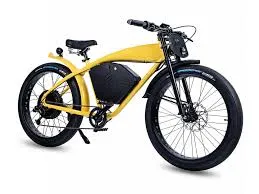Mar . 04, 2025 11:32 Back to list
27.5/29 "Color-Changing Carbon Fiber Mountain Bike 12 Variable Speed Mountain Bike Dirt Bike


Inspect and Replace Worn Components Take a close look at the derailleur pulleys and chain. Worn components can dampen the effectiveness of your adjustments. Replace degraded pulleys and ensure the chain is free of rust and wear. Cleaning and regular maintenance prolongs the life of these vital pieces. Set Limit Screws Triumphantly Limit screws prevent the chain from slipping off either end of the cassette. Carefully adjust them using a screwdriver; the H screw governs the high gear, while the L screw controls the low gear. Fine-tuning prevents over-shifting and guards against derailleur stress or chain issues. Test and Fine-Tune After adjustments, test bike performance in real-time conditions. Gently pedal and shift through each gear. Listen for any abnormal noises or hesitations. Further fine-tuning of the barrel adjuster might be necessary for precise operation. Maintain Regularly Consistent maintenance ensures the longevity of your adjustments and aides in early detection of potential issues. Regular checks of the derailleur alignment, cable tension, and cleanliness safeguard the entire mechanism. Applying not just technical skills, but also years of cycling experience, this methodology champions a comprehensive understanding of the mountain bike’s rear derailleur system. Knowledge transferable to enthusiasts and mechanics alike includes nuanced attention to detail and robust situational awareness. These not only facilitate immediate repair needs but also cultivate an authoritative and trustworthy approach to bike maintenance. In summary, mastering rear derailleur repairs instills confidence that transcends into every ride. Ensuring expertise in maintaining the precise function of your bike elevates performance and redefines your biking experience. Benefiting from these advanced insights will keep your mountain biking adventures seamless and your confidence unbridled.
-
In-Depth Guide to Ebike Frames: Design, Use & Future Trends
NewsNov.25,2025
-
Discover Top E Bike Brand Insights, Specs & Future Trends | Yanline Bike
NewsNov.24,2025
-
Green E Bike – The Future of Sustainable Urban Mobility
NewsNov.24,2025
-
Ruffian eBike: Durable, Efficient Electric Bikes for Modern Mobility
NewsNov.23,2025
-
Comprehensive Guide to the Global E Bike Market and Future Trends
NewsNov.23,2025
-
Understanding Electric Bicycle Range: A Complete Guide for Smarter E-Bike Use
NewsNov.22,2025
-
Ceron Electric Bike – Efficient, Sustainable Urban Mobility Solutions
NewsNov.22,2025




